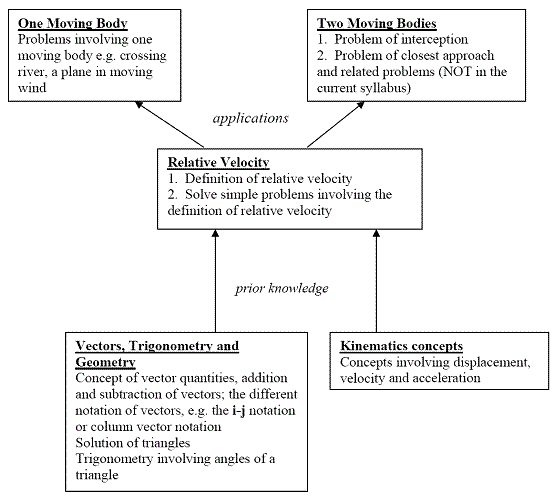 |
Asia-Pacific Forum on Science Learning and Teaching, Volume
7, Issue 2, Article 8 (Dec., 2006) Tin-Lam TOH A survey on the teaching of relative velocity and
|
1. Introduction
Relative velocity was first introduced into the Singapore Additional mathematics curriculum in 2001. The inclusion of this chapter under the topic of vectors (see Ministry of Education, 2000) probably aims to build this chapter on the pupilsí knowledge of vectors and is a special application of vectors in real life. As it is a mathematics topic, not so much on a thorough understanding of the physics concepts of relative velocity per se is expected from the students.
A quick survey of the recent typical questions on relative velocity from the Additional Mathematics examination papers show that, in fact, solving such problems requires a great deal of sound concrete knowledge of vectors and kinematics. For example, a student needs to know that when a particle travels with a constant velocity, there is not resultant force acting on the particle; it is a common misconception that a force causes motion (or the velocity) of the moving body. To put it diagrammatically, the hierarchy of learning for relative velocity can be summarised in the following diagram.

Figure 1: The learning hierarchy of relative velocity
In order for learning to be effective, according to Gagne (1970), tasks of the lower order learning hierarchy must be acquired first before the tasks at the higher level. Thus, any learning difficulties of the pupils can either be the difficulties involving concepts of relative velocity and their applications or the tasks of the lower hierarchy, e.g. lack of content mastery of concepts of vectors, trigonometry or geometry.
It is the interest of the author to find out the pupilsí general learning difficulties in relative velocity after it has been in the syllabus for five years.